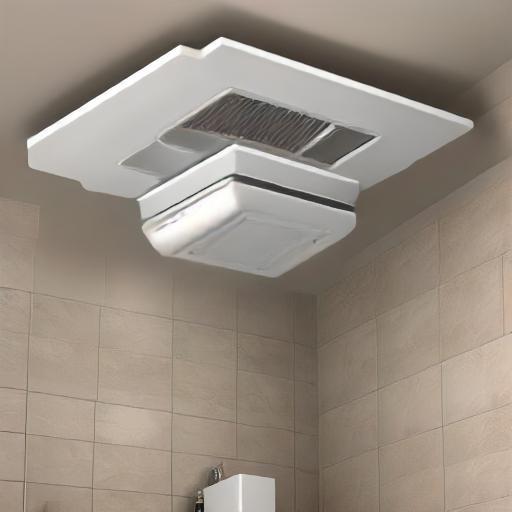
To maintain a healthful environment, prevent the growth of mildew and mold, and eliminate unwanted smells, proper ventilation must be ensured in your bathroom. There are numerous ways to make certain that one has good ventilation in his/her home including installation of a bathroom fan. This article assists you on how to install a bathroom fan making it easier for beginners who may not have much experience with do-it-yourself projects.
Why Install a Bathroom Fan?
Before we get started with the installation process, let us briefly look at why putting up a bathroom fan is necessary:
- Moisture Control: Bathrooms usually have high humidity because of having showers and baths. A fan takes out moist air which might lead to condensation on the walls and mirrors.
- Mold and Mildew Prevention: Too much moisture can cause molds and mildew that may affect people’s health and harm their homes.
- Odor Elimination: A fan makes sure that unwelcome smells are taken away from your bathrooms thus leaving them fresh.
- Improved Air Quality: Good airing increases the general quality of air around you thus leading to healthy environments indoors.
Tools/Materials Required
The following tools/materials should be ready before starting;
- Bathroom kit (fan/ducting/housing)
- Screwdriver
- Drill
- Wire cutters
- Utility knife
- Duct tape
- Wire connectors
- Roofing Screws
- Ladder
- Measuring Tape
- Electrical cable
- Safety Goggles
Installation Manual
1. Select a Fan of Right Size: Toilet fans are selected according to the size of your toilet. The rating for fans is done in terms of airflow capacity measured in cubic feet per minute. How many CFM (cubic feet per minute) go into one square foot of your bathroom space? One squared foot equals one cfm so if your bathroom measures 100 square meters, choose a fan with a rating of not less than 100CFM.
2. Plan for Installation: Decide where you would like to keep it installed. The most common and efficient place for this unit is near the shower or bathtub due to the presence of moisture which is being produced there all the time. It should be ensured that ductwork can be connected outside without any obstruction within the house itself. If you are replacing an old fan, then just put it in that same spot.
3. Cut Hole in Ceiling: Look at where you will cut the hole on the ceiling from the template given with the fan kit, use a utility knife, or drywall saw to cut a hole at that point by wearing protective goggles against dust.
4. Install Housing: Place the housing in a hole ensuring it is flush with the ceiling as secured by nails or screws through roofing nails and/or screws tied up onto joists while installing this kind of device. Make sure the housing is level and stable.
5. Run the Ductwork: Attach the duct to the fan housing and run it to the exterior vent. Use the shortest and straightest path possible to minimize airflow resistance. Secure the duct with duct tape so that no air leaks out of it in case there is a need to put a hole on an outside wall or roof for ventilation.
6. Wire the Fan: Firstly, turn off the circuit breaker supplying electricity to the bathroom outlets so as not to blow yourself up! Now, you have run an extra electrical cable from your new fan towards your wall switch location. Finally, strip back all wire ends according to manufacturers’ wiring instructions & connect them as shown in the wiring diagram that comes with your fan; this will probably involve connecting black wire to power, white one neutral, and green/bare wire ground. Then twist on wire nuts while making sure each connection has been made tight.
7. Install the Exterior Vent: Fasten screws/nails secure ventilation grids onto the home’s exterior ensuring they are watertight enough for preventing any water penetration as well as keeping pests away.
8. Test the Fan: Turn on again at your circuit breaker for verifying if the fan turns on correctly which should happen since soon after flipping your switch you must hear sounds of whirling blades expelling air beyond or fanning out through the attic venting system.
9. Installation Completion: The fan’s grille cover should be attached to the housing. If it is also a light, put in the right bulb and cover. Cleaning up all debris and ensuring that the area is tidy.
Success Tips for Putting It Up
- Have a look at Instructions: You should always abide by the manufacturer’s instructions supplied with your fan kit. Every model might have unique specifications.
- Check Local Codes: Your installation should comply with local building codes and regulations.
- Duct connections sealing: use duct tape to seal all duct connections to prevent air leakages.
- Duct insulation: in colder climates, insulate your ducts not only to avoid condensation but also for energy efficiency purposes.
- Regularity of maintenance: regular cleaning of the fan and duct helps maintain excellent performance while preventing waste dust particles from accumulating on them.
Conclusion
Putting up a bathroom fan is an excellent home upgrade activity that adds comfort and better air quality in the bathroom. By following these steps, one can successfully set up a bathroom fan and experience proper ventilation advantages. Before you take a brush or go calling professionals, however, remember that a well-ventilated bathroom is worth every investment toward your health and home’s longevity.
Leave a Reply